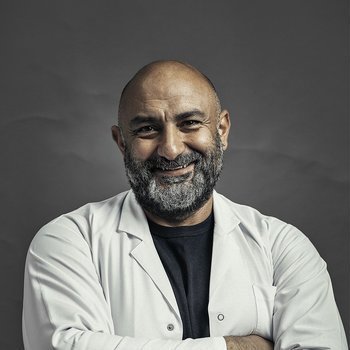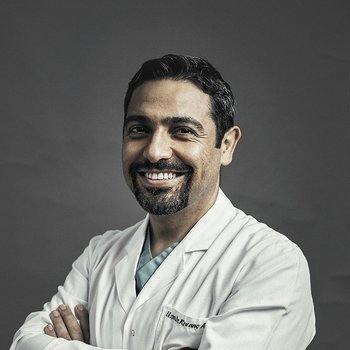Menu
Cardiovascular surgery is the surgical procedure performed on the heart and four major vessels by surgeons specialized in this field. Cardiovascular diseases are among the important causes of death in Turkey and the world. With advances in medicine, these diseases can now be diagnosed early in anyone who has regular check-ups. If you suffer from cardiovascular diseases that require surgical treatment, you can have your examination and treatment performed by specialist doctors in the cardiovascular surgery departments of health institutions.
Hospitals’ experienced cardiac anesthesia team and intensive care units equipped with advanced life support devices contribute significantly to the success rate of surgeries and ensure that patients have a more comfortable post-operative period.
Practices performed in the department of cardiovascular surgery
CGM TEST
CGM Test or cardiogoniometry is a computer-aided test that allows imaging by measuring the three-dimensional electrical activity of the heart and vessels leading to the heart. In the method, also known as 3D-ECG, it is performed in a short time of 4-5 minutes while the patient is at rest, with the help of 5 electrodes attached to the chest and back. Patients are not exposed to radiation or any other chemicals during the application. With this test, it is possible to predict the risk of heart attack more quickly than classical ECG.
ABI TEST
ABI test is a measurement method used primarily in the diagnosis of peripheral artery disease. It consists of the initials of the words ankle-brachial index in English and can be translated into Turkish as “ankle-brachial index”. In peripheral artery disease, there is narrowing of the arteries feeding the arms or legs, resulting in circulatory disorders in the affected limbs. The ABI test is performed by attaching a blood pressure cuff to the arms and legs. However, instead of a stethoscope, doppler sonography is used to measure pressure values. Doppler sonography is a procedure that is part of ultrasound examinations in which blood flow in arteries can be determined and made visible or audible.
ANGIO FROM WRIST
In the past, almost all heart catheterization was performed through arteries located in the right or left groin, called the femoral arteries. But now the wrist has started to be preferred as well. Because, unlike the inguinal vein, the wrist vein is very close to the skin surface and can be easily found even in obese patients, and bleeding control is easier in this vein. For wrist angiography, the procedure area is anesthetized with local anesthesia. A small incision is made, the vein is entered and the procedure is performed.
CORONARY ANGIOGRAPHY
The process of imaging the vessels that feed the heart and called coronary arteries by administering dyed liquid is called coronary angiography. The procedure is performed by entering the groin or wrist veins with the help of special catheters.
CORONARY BY-PASS
When there is narrowing or occlusion in the coronary vessels feeding the heart, the heart cannot be fed adequately. If the blood flow in the vessels drops below a certain level, a heart attack occurs and the heart muscle is damaged. To prevent heart muscle damage, a procedure called coronary bypass is performed on the relevant vessel via open heart surgery. Bypass procedure is performed by connecting a vein taken from another part of the body to the blocked vein as a bridge.
HEART VALVE (AORTAL, MITRAL, TRICUSPID AND PULMONARY) REPAIR AND REPLACEMENT SURGERY
In case of insufficiency or stenosis in the heart valves, repair or replacement surgery may be required for the relevant valve. Artificial or biological heart valves obtained from animals are used in the replacement process. Artificial valves are more durable, but require lifelong use of anticoagulant medication as they can cause clots. These medications may pose a risk of bleeding. Biological valves do not require the use of medication, but the valve has a shorter lifespan and must be replaced with a new surgery after 7-8 years.
HEART VALVE SURGERY
These are surgical procedures performed on the valves between the heart chambers. Heart valve surgery is performed by cardiovascular surgeons under general anesthesia. It is a difficult surgery and is performed by opening the rib cage. During surgery, the damaged heart valve is repaired or replaced.
AORTIC ANEURYSM SURGERY (ASCENAL, ARCUS AORTIC ANEURYSM REPAIRS)
The aorta is the main artery that comes from the heart and distributes clean blood to the body. All of the blood going to the body is pumped from the heart to the body through this vein. The part where the aorta exits the heart is called the ascending aorta, and the part where it curves immediately is called the aortic arch. Abnormal sac-shaped enlargements called aneurysms are common in these regions of the aorta. Aneurysms must be treated surgically due to the danger of rupture.
LEFT VENTRICLE ANEURYSM REPAIRS
Left Ventricular Aneurysm is a balloon-shaped sac formation in a part of the left ventricle muscle, which is the lower left chamber of the heart. The pouched heart muscle cannot contract and contribute to the pumping function of the heart. Additionally, clots may form here and heart rhythm disturbances may occur. Left ventricular aneurysm repairs are performed with different surgical techniques depending on the size and characteristics of the aneurysm.
VESSEL REMOVAL FOR BY-PASS WITH SMALL INCISIONS
Coronary vessels (vessels that feed the heart) that cannot be opened using treatment methods such as stents and balloons are treated with a method called by-pass. In the bypass method, veins taken from other body parts of the person, such as the arm or leg, are used. In the classical venipuncture procedure, large incisions must be made on the person’s arms and legs. On the other hand, it is possible to remove the vein using the endoscopic method using small incisions. With the endoscopic method, the scar is smaller and the healing process is faster.
HEART SURGERY WITH SMALL INCISIONS
With advances in medicine, heart surgeries can now be performed through small incisions made in invisible parts of the body. This type of surgery is called minimally invasive surgery. In classical open heart surgeries, the breastbone, called the sternum, is cut and this can cause many negative complications. Since this bone is not cut in surgery performed with small incisions, negative effects are less. Since the incision wounds are small, healing and return to daily life are faster.
REMOVAL OF HEART TUMORS
Cardiac tumors are benign or malignant mass structures that originate from the heart or spread from organs other than the heart. The most common benign heart tumor in adults is myxoma, and the malignant heart tumor is angiosarcoma and rhabdomyosarcoma.
Surgical treatment of these is done by surgically removing the tumor tissue. Apart from the classical method, the surgical procedure is also performed through small incisions made under the breast, which is called minimally invasive surgery, especially in women.
KVC PERIPHERAL VASCULAR SURGERY
Peripheral artery is the name given to the arteries that feed all other tissues and organs in the body except the heart and brain. Peripheral vascular diseases are diseases that occur as a result of stenosis or occlusion in these vessels and are generally used for leg vascular disease. Surgical methods called peripheral bypass or endarterectomy are used in the treatment of peripheral vascular disease. In bypass surgery, blood flow is restored by bridging the blocked vein with an artificial vein taken from other parts of the body. In endarterectomy, the plaque layer causing the blockage in the relevant vessel is removed.
MINIMALLY INVASIVE CARDIOVASCULAR SURGERY
Minimally invasive cardiovascular surgery is a surgery method that is performed using small incisions and causes the least harm to the patient, the least strain on the heart, and the fastest recovery for the patient. Minimally invasive cardiovascular surgery aims to reduce trauma, blood loss, post-operative pain, recovery time, infection risk and a better cosmetic appearance.





